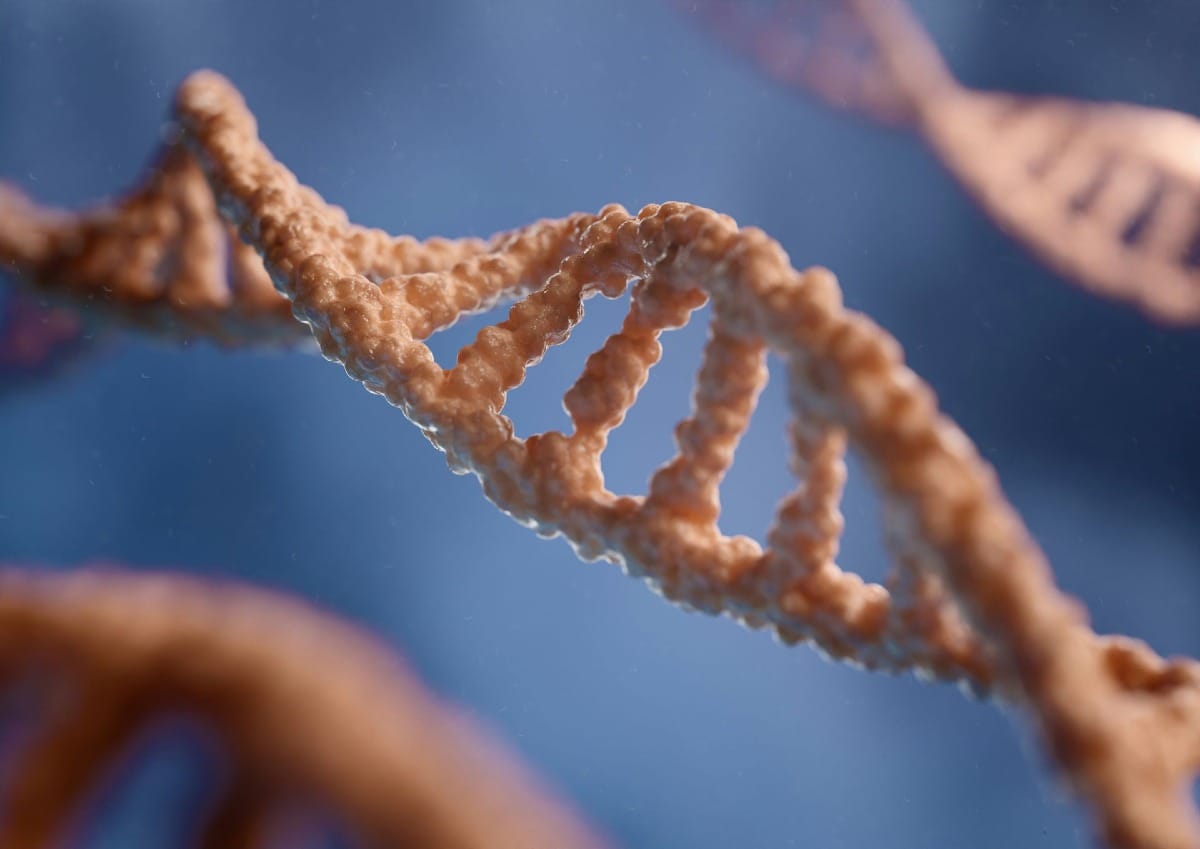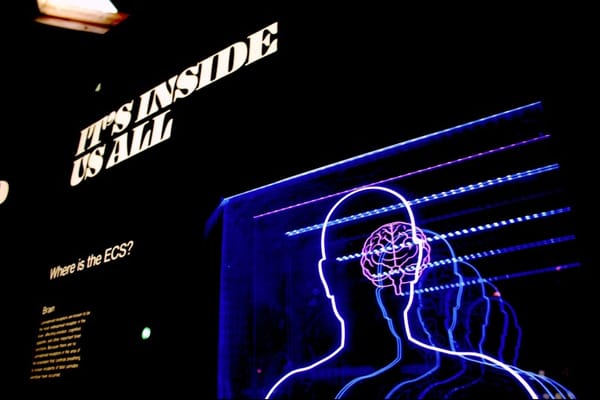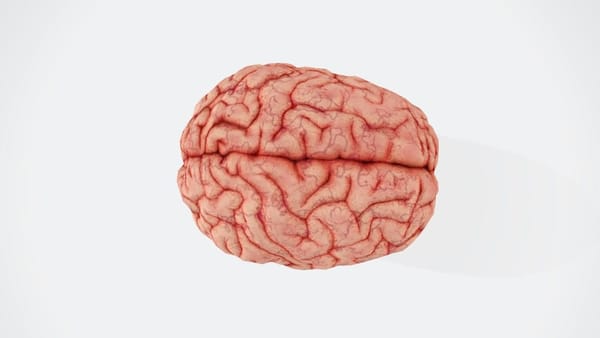Scientists have made a groundbreaking discovery by capturing the elusive 'twist' motion of the NMDAR protein, a crucial component in brain signaling. This breakthrough, achieved through innovative imaging techniques and collaborative research, provides unprecedented insights into the mechanics of neuronal communication and opens new avenues for understanding and potentially treating various neurological disorders.
NMDA receptor
Glutamate receptor and ion channel in neurons
Function: Acts as a coin detector to allow positively charged ions to flow through the cell membrane, critical for synaptic plasticity, learning, and memory.
Type: Ionotropic, meaning it allows the passage of ions through the cell membrane.
Ligands: Activates primarily by the binding of glutamate and glycine (or D-serine), but requires depolarization to remove Mg2+ ions blocking the channel.
Blocked by: Psychoactive drugs like phencyclidine (PCP), alcohol (ethanol), and dextromethorphan (DXM), and some anesthetics and analgesics like ketamine and nitrous oxide.
Overactivation: Leads to excessive influx of Ca2+, causing excitotoxicity involved in neurodegenerative disorders.
Antagonist: Memantine acts as an uncompetitive antagonist, blocking ion flow after activation thereby having potential neuroprotective properties.
NMDAR Structure and Function
The N-methyl-D-aspartate receptor (NMDAR) is a complex protein structure that plays a crucial role in brain signaling and neuroplasticity. NMDARs are ionotropic glutamate receptors found in neural synapses, responsible for mediating excitatory neurotransmission in the central nervous system.
NMDARs are composed of multiple subunits, typically including GluN1 and GluN2 subunits, which come together to form a functional receptor. These subunits arrange themselves in a specific configuration to create a central ion channel that allows the passage of calcium and other ions when activated.
The receptor's function is intricately linked to its structure. NMDARs require the binding of two different neurotransmitters to become activated: glutamate and glycine. 1 Glutamate binds to the GluN2 subunit, while glycine binds to the GluN1 subunit. This dual binding requirement acts as a safeguard, ensuring that the receptor only opens under specific conditions.
When both glutamate and glycine are bound, the NMDAR undergoes a series of conformational changes, culminating in the recently discovered 'twist' motion. 1 This twist is the final step that leads to the opening of the ion channel, allowing calcium ions to flow into the neuron. The influx of calcium triggers various intracellular signaling cascades, which are critical for processes such as synaptic plasticity, learning, and memory formation.
Professor Hiro Furukawa from Cold Spring Harbor Laboratory emphasizes the complexity of this process: "There are many pieces dancing independently in NMDAR. They have to coordinate with each other. Everything has to go perfectly to open the ion channel." 1 This intricate coordination highlights the precision required for proper NMDAR function.
The structure of NMDARs also includes binding sites for various modulators and drugs, which can influence receptor function. These sites provide potential targets for therapeutic interventions in neurological disorders associated with NMDAR dysfunction. 1
Understanding the detailed structure and function of NMDARs, particularly the newly discovered twist motion, is crucial for developing more effective treatments for conditions such as Alzheimer's disease, depression, and other neurological disorders where NMDAR function is implicated. 1
Sources:
Breakthrough Discovery: The 'Twist'
The breakthrough discovery of the NMDAR protein's 'twist' motion represents a significant advancement in our understanding of brain signaling mechanisms. This critical dance move, in which the NMDAR rotates into an open formation, was previously unknown and marks the final step in the protein's complex routine that enables electrical signaling crucial for cognitive functions 1.
Professor Hiro Furukawa and his team at Cold Spring Harbor Laboratory utilized electron cryo-microscopy (cryo-EM) to capture this elusive motion. Cryo-EM is a cutting-edge technique that freezes proteins in action, allowing researchers to visualize their dynamic movements at the atomic level 1. This method was instrumental in revealing the precise choreography of NMDAR's atoms during the 'twist'.
The challenge in capturing this motion lay in the protein's inherent instability in its open conformation. Furukawa explains, "It's not the most stable conformation. There are many pieces dancing independently in NMDAR. They have to coordinate with each other. Everything has to go perfectly to open the ion channel." 1 This instability necessitated innovative approaches to keep the protein in its open state long enough for imaging.
To overcome this hurdle, Furukawa's team collaborated with Professors Stephen Traynelis and Dennis Liotta from Emory University. Together, they discovered a molecule that favors the NMDAR in its open position, enabling the researchers to capture the critical 'twist' motion 1. This collaborative effort underscores the importance of interdisciplinary research in making significant scientific breakthroughs.
The visualization of the 'twist' provides unprecedented insights into the mechanics of NMDAR function. It reveals how the protein's various components coordinate to achieve the final open conformation, allowing for the generation of electrical signals essential for cognitive processes like memory formation 1. This detailed understanding of NMDAR's conformational changes could pave the way for more targeted and effective treatments for neurological disorders.
Interestingly, the research also revealed that different types of NMDARs exhibit distinct dance routines. A separate study from Furukawa's lab provided the first view of the GluN1-3A NMDAR, showing completely different dance moves resulting in unusual patterns of electrical signals 1. This diversity in NMDAR behavior highlights the complexity of brain signaling mechanisms and suggests that different NMDAR types may play specialized roles in neural function.
The discovery of the NMDAR 'twist' not only advances our fundamental understanding of brain signaling but also opens new avenues for drug development. By providing a detailed map of the protein's conformational changes, this breakthrough could enable researchers to design more precise and effective compounds that can modulate NMDAR function, potentially leading to improved treatments for a range of neurological and psychiatric disorders 1.
Sources:
Techniques and Collaboration
The groundbreaking discovery of the NMDAR protein's 'twist' motion was made possible through innovative techniques and collaborative efforts across institutions. At the heart of this research was the use of electron cryo-microscopy (cryo-EM), a cutting-edge imaging technique that allows scientists to visualize proteins in action at the atomic level. 1
Cryo-EM works by rapidly freezing protein samples, preserving their structure in a near-native state. This method was crucial for capturing the NMDAR protein in its open conformation, a notoriously unstable state that had eluded researchers until now. The technique's ability to freeze and visualize proteins in motion was key to deciphering the critical 'twist' step in NMDAR's complex dance routine. 1
However, the use of cryo-EM alone was not sufficient to solve the puzzle. The research team, led by Professor Hiro Furukawa at Cold Spring Harbor Laboratory, faced a significant challenge in keeping the GluN1-2B type of NMDAR in its open pose long enough for imaging. To overcome this hurdle, Furukawa's team engaged in a collaborative effort with Professors Stephen Traynelis and Dennis Liotta from Emory University. 1
This cross-institutional collaboration proved fruitful, as the combined expertise led to the discovery of a molecule that favors NMDAR in its open position. This molecular tool was essential in stabilizing the protein long enough for the cryo-EM imaging to capture its elusive 'twist' motion. 1
The success of this research underscores the importance of interdisciplinary collaboration in tackling complex scientific challenges. By combining the structural biology expertise of Furukawa's team with the pharmacological knowledge of the Emory University researchers, the scientists were able to overcome technical obstacles and achieve a breakthrough that had previously been out of reach.
Furthermore, the collaborative approach extended beyond just solving the immediate problem. The research team's efforts have laid the groundwork for future drug development. As Furukawa explains, "Compounds bind to pockets within proteins and are imperfect, initially. This will allow us and chemists to find a way to fill those pockets more perfectly. That would improve the potency of the drug." 1 This insight highlights how the detailed structural information obtained through their techniques can guide medicinal chemists in designing more effective and specific drugs targeting NMDARs.
The collaborative spirit of this research extends to the broader scientific community as well. By sharing their findings and methodologies, the team has opened up new avenues for research into other types of NMDARs and related proteins. For instance, another recent study from Furukawa's lab provided the first view of the GluN1-3A NMDAR, revealing surprisingly different conformational changes. 1 This ongoing work demonstrates how initial breakthroughs can spark a cascade of discoveries, each building upon the last to deepen our understanding of complex biological systems.
Sources:
Implications for Medicine
The discovery of the NMDAR protein's 'twist' motion has significant implications for medicine, particularly in the fields of neurology and psychiatry. This breakthrough provides a deeper understanding of brain signaling mechanisms, which could lead to more effective treatments for a range of neurological disorders.
One of the most promising aspects of this discovery is its potential to revolutionize drug development for conditions associated with NMDAR dysfunction. Professor Hiro Furukawa explains, "Compounds bind to pockets within proteins and are imperfect, initially. This will allow us and chemists to find a way to fill those pockets more perfectly. That would improve the potency of the drug." 1 This detailed structural information could enable researchers to design more precise and effective drugs that target NMDARs, potentially leading to improved treatments for disorders such as Alzheimer's disease and depression.
The specificity of drug targeting is crucial in neuropharmacology. As Furukawa notes, "The shape of the pocket is unique. But there could be something similarly shaped in other proteins. That would cause side effects. So, specificity is key." 1 By understanding the exact conformational changes that occur during the NMDAR 'twist', scientists can work towards developing drugs that interact more selectively with NMDARs, potentially reducing side effects and improving therapeutic outcomes.
Moreover, the discovery that different types of NMDARs exhibit distinct 'dance moves' opens up new avenues for targeted therapies. The recent study from Furukawa's lab on the GluN1-3A NMDAR, which showed completely different conformational changes, suggests that different NMDAR subtypes may play specialized roles in neural function. 1 This knowledge could lead to the development of subtype-specific NMDAR modulators, allowing for more precise manipulation of neural signaling in different brain regions or circuits.
The implications extend beyond just drug development. The detailed understanding of NMDAR function could also inform new diagnostic tools for neurological disorders. By identifying specific alterations in NMDAR function associated with different conditions, researchers might develop biomarkers for early detection or monitoring of disease progression.
Furthermore, this research could have implications for personalized medicine approaches in neurology and psychiatry. As we gain a better understanding of how genetic variations affect NMDAR function, it may become possible to tailor treatments based on an individual's specific NMDAR profile, leading to more effective and personalized therapeutic strategies.
In the field of neuroprotection, understanding the precise mechanics of NMDAR function could lead to new strategies for preventing or mitigating neuronal damage in conditions such as stroke or traumatic brain injury. By developing compounds that can modulate NMDAR activity in specific ways, it may be possible to protect neurons from excitotoxicity while preserving normal signaling functions.
While these potential medical applications are exciting, it's important to note that translating this basic science discovery into clinical applications will require significant further research. However, the detailed structural and functional insights provided by this breakthrough offer a solid foundation for future studies and drug development efforts aimed at addressing a wide range of neurological and psychiatric disorders.
Sources:












Member discussion